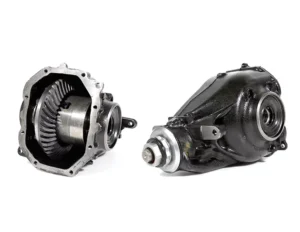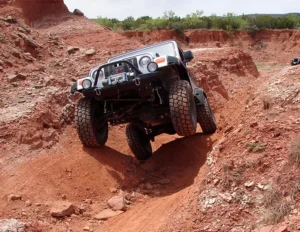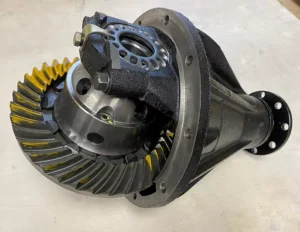When it comes to how your car handles power between the wheels, the type of differential it has makes a big difference. Two common types are the Open Differential and the Limited-Slip Differential (LSD). To help explain the difference, let’s think about walking on a really slippery road.
Imagine you’re trying to walk on ice. You’d plant one foot firmly on the ground to keep your balance, then drag the other foot forward. Then, you switch feet, planting the other foot firmly and dragging the first foot. By doing this, you avoid slipping. The foot that’s firmly on the ground has traction, while the foot you drag is moving you forward. This careful, back-and-forth way of walking is kind of like how a Limited-Slip Differential (LSD) works.
Now, think of your car’s wheels like your feet. On a slippery road, an LSD makes sure that the wheels work together like your feet do. If one wheel starts to spin because it’s lost grip, the LSD steps in. It shifts some of the power from the slipping wheel to the other wheel that still has grip, kind of like how you shift your weight to the foot that’s not slipping. This keeps the car moving forward steadily, even when the road is slick.
What About an Open Differential?
An Open Differential doesn’t do this. It gives the same amount of power to both wheels, which works fine when both wheels have good traction. But if one wheel loses grip and starts spinning, all the power goes to that spinning wheel. It’s like trying to walk on ice without being able to shift your weight to the foot that’s not slipping—you’d probably fall. In a car, this means you could lose control, especially on slippery surfaces.
What About an LSD Differential?

A Limited-Slip Differential is like an open differential with a little extra help. It has a system inside—usually some gears, clutches and springs—that helps manage the power between the wheels. When one wheel starts to lose grip, the LSD shifts some power to the wheel that still has traction. This way, your car stays steady and doesn’t slip around as much.
Conclusion
In simple terms, the big difference between an open differential and a limited-slip differential is how they handle traction. An open differential splits power evenly between the wheels, which is okay until one wheel loses grip. A limited-slip differential, on the other hand, helps your wheels work together better, especially on slippery roads. It’s like having that little bit of extra control to keep your car moving straight and smooth, even when things get slick.



